You don’t have to spend long in Crete to realise it’s a pretty dry place. Most of the native vegetation is low and scrubby, the hardy goat is the grazier’s choice of livestock, and the ubiquitous olive groves are irrigated with thousands of kilometres of polypipe. The island gets about 500mm of rain per year (in comparison Sydney gets about 1170mm), and bugger all of it falls in the summer months. Back in the days before the internal combustion engine, Cretans relied on wind power to water their crops and livestock, and to grind the harvest of cereal crops. The remnants of stone and timber windmills can still be seen in the rural landscape, and the Lasithi Plateau is famous for them.
The Lasithi Plateau, located at 850m altitude in eastern Crete, has been worked by farmers since the time of the Minoans. The ring of mountains that encircle the Plateau provide vantage points for spectacular views across the plain.
I had planned an overnight hike in the Dikti Mountains, but after enduring a night camping out in wind and rain I abandoned the idea and went sight-seeing instead. I parked in the village, made a friend with a puppy, and the two of us climbed up to the Psychro Cave (actually the place where Zeus was born, rather than a hangout for Norman Bates). The Cave was closed to visitors due to an earthquake, but the view over the Lasithi Plateau was a ripper
The Plateau’s oldest and largest windmills line a ridge on the northern border of the flat country. These stone and timber mills made use of the prevailing wind to grind grain, and 24 of the original line of 27 mills can still be seen.
As opposed to fixed blades, the windmills used cloth ‘sails’ that could be rolled out in favourable conditions, and back around the ‘spokes’ again if the wind got too strong.
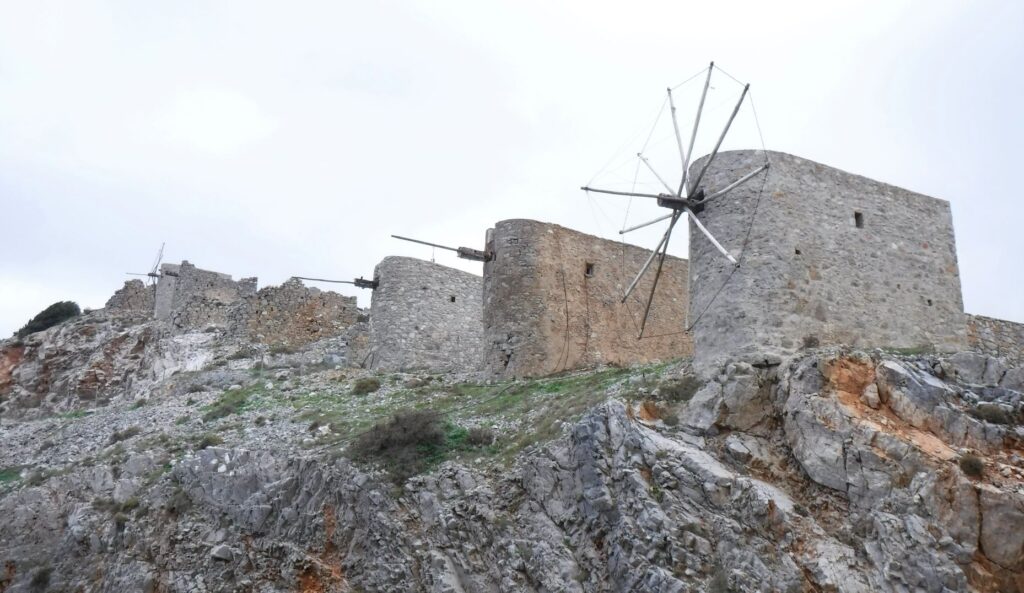
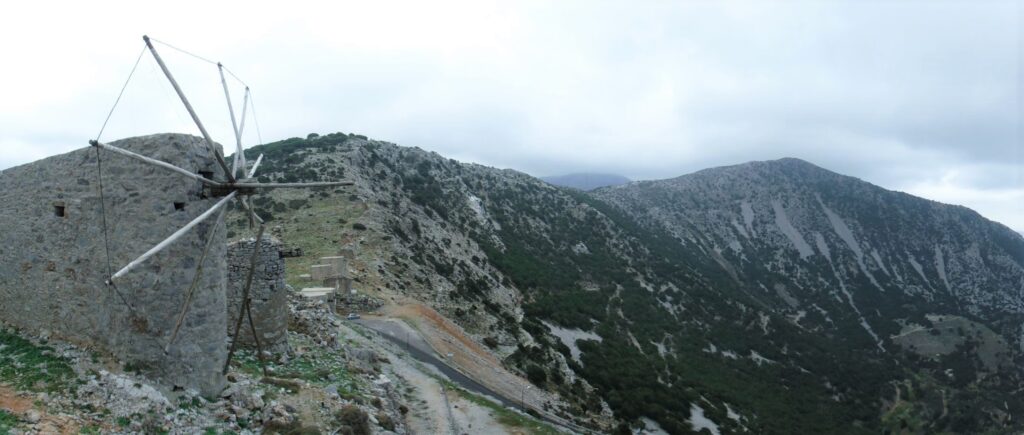
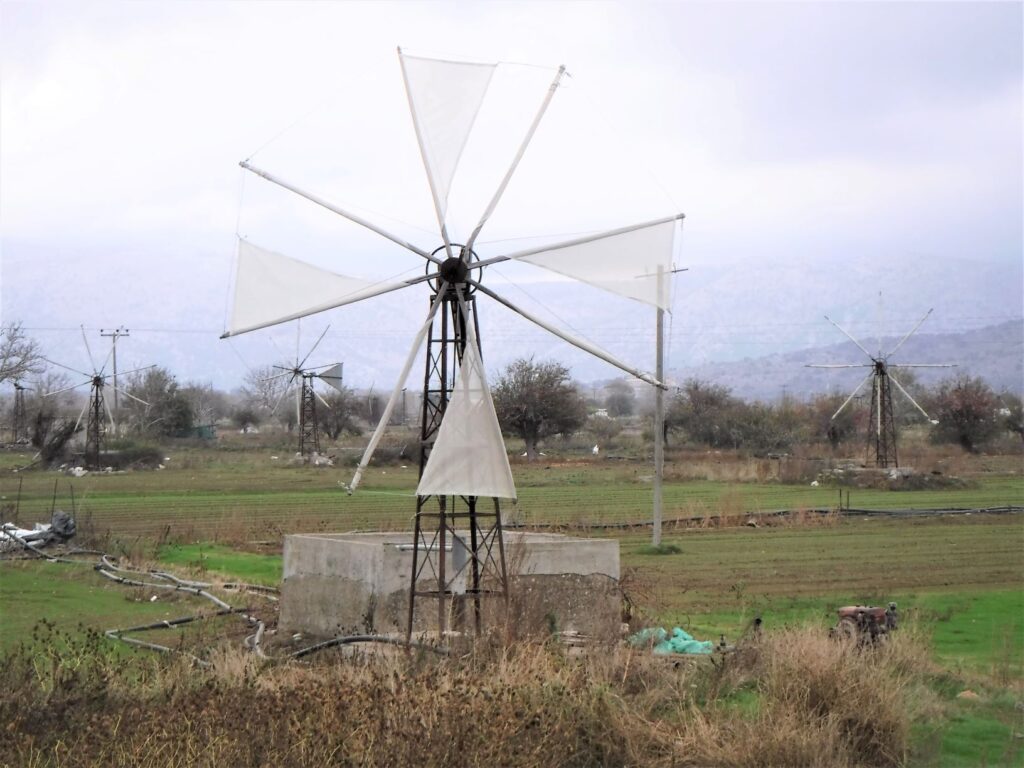
Down on the plateau, smaller steel-tower mills were installed in the early 1900s to pump water for irrigation and stock. Apparently at one stage there were more than 10,000 windmills pumping from the shallow water table.
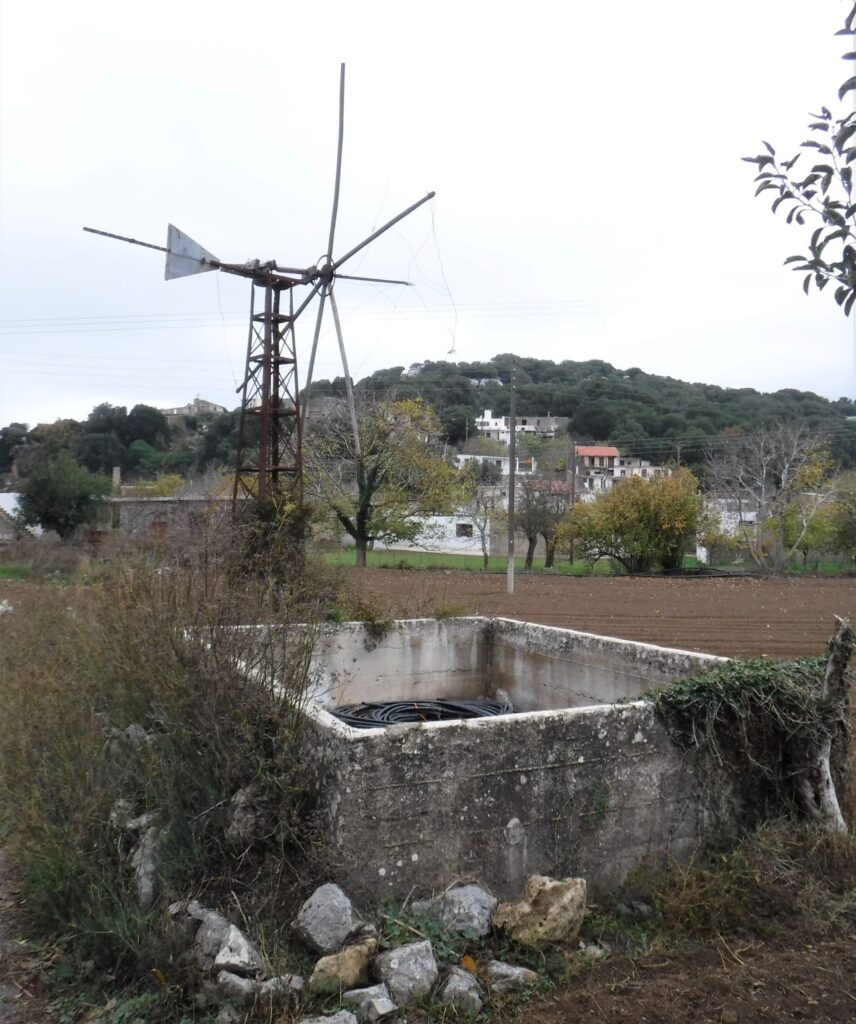
There are only a handful of these mills still turning, with most having been replaced by diesel pumps.
On a gloomy overcast day, the skeletons of the old windmills certainly give the Lasithi Plateau a melancholy feel.
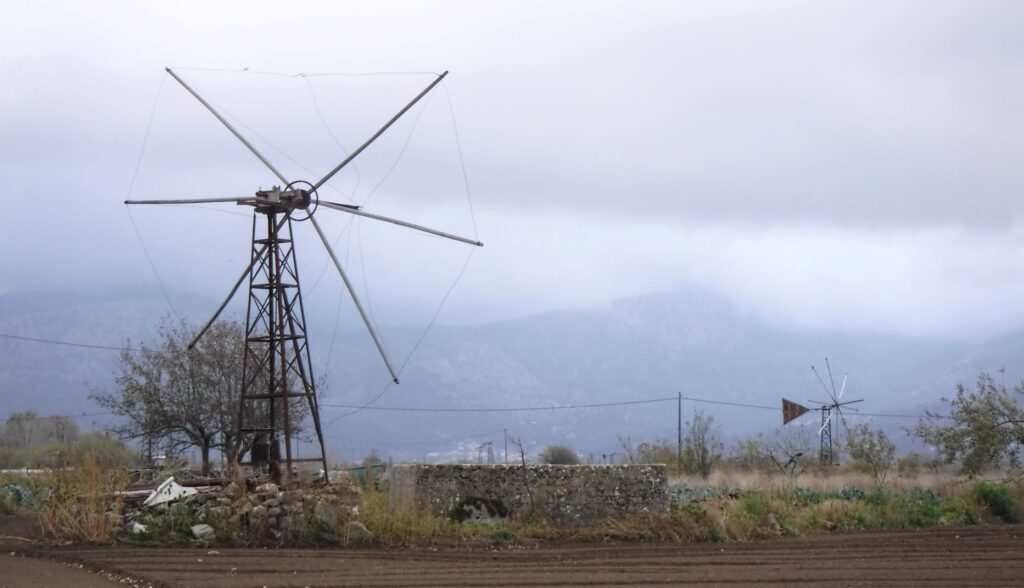
As technology goes full circle, and renewable energy replaces fossil fuels, perhaps the Lasithi Plateau will once again be covered in windmills. Until then, the restored mills provide a link to the past in this ancient farming district.
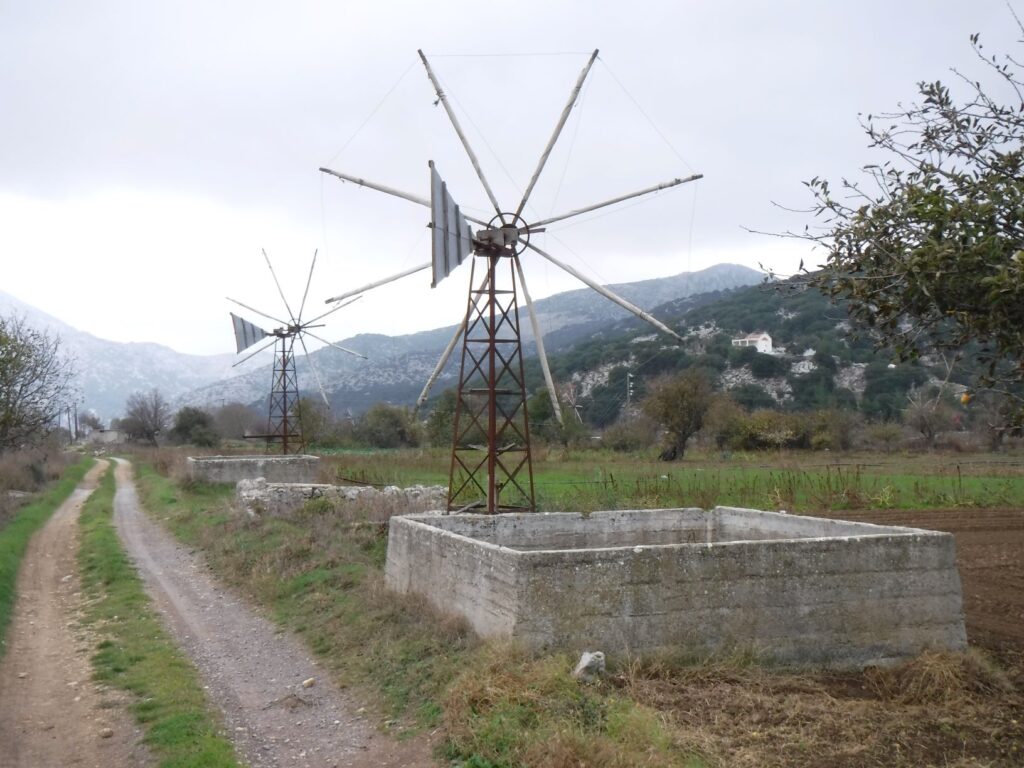
If you enjoyed this post, you may also like Bull Leaping, The Battle of Crete
Leave a Reply